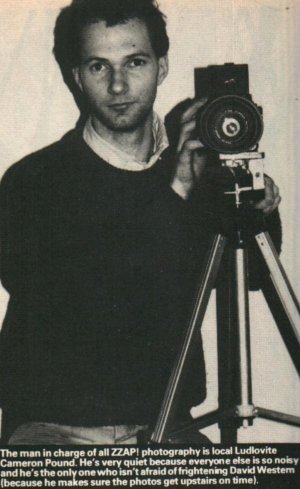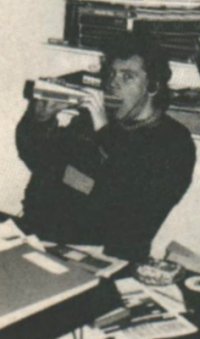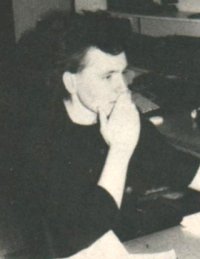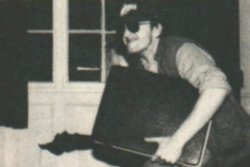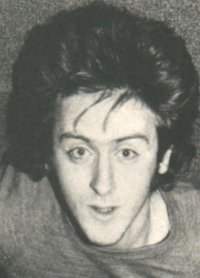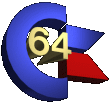| 5. Screen Photography In charge of all photography is relative newcomer to the team, Cameron Pound, a Ludlow local Cameron has a special room beside the games room, and here on a large table a Spectrum, Amstrad and Commodore 64 are permamently set up with their respective monitors. The Cameras (35mm for black and white and 3. square for colour transparencies) are focused on the monitor screen with an exposure time of a quarter of a second. This allows 6 TV frames to be photographed which gets rid of the roll bar effect that a more normal exposure time results in, due to the luminescence of the TV screen. These films, together with any other photographs that may be needed, are processed and pcinted in our own darkroom, just around the corner from the games and screen photography rooms. Cameron produces contact sheets from which the editorial and art departments can choose which pictures need enlarging. Once the prints have been made, the individual reviewers ensure that they are marked up correctly on the back, so that the layout people in Ďartí will know to which piece of text they belong - otherwise we might end up with the wrong screen shot illustrating the review - remember Zyro? |
|
|
|
|
|
|
|
6. From the typed to the the printed word How does what we write on an Apricot end up on the magazineís pages? All the various articles, reviews and items slowly build up as individual files on the Apricot's hard disk. When Roger Kean has finished 'subbing' - checking that the grammar, syntax and spelling are correct (hopefully) - the files are sent to our typesetters, a local firm some five minutes walk away. Here the real work is done, turning the text into ASCII characters and shunting it all through a Linotypesetter. This computer effectively tells a photo print unit what letters (identified by their individual ASCII code) to put where, in what size and weight (eg. medium text, bold text or italic) It also sets the text on various widths to fit the magazineís columns. The result is a thin roll of photo paper containing the file in its finished form. Once itís been checked through editorial, the typesetting goes upstairs to Ďartí for layout This process continues throughout the schedule right up to a few hours before the last page is ready to leave for the printers. |
|
|
Prev Page |
Next page |
